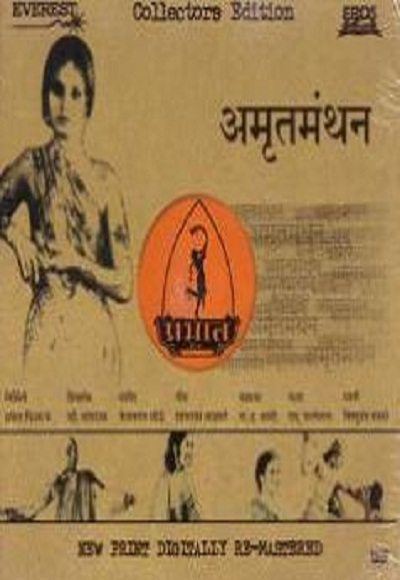5.6 /10 1 Votes
Directed by V. Shantaram Written by Narayan Hari Apte Cinematography Keshavrao Dhaiber Director V. Shantaram | 5.5/10 IMDb Produced by Prabhat Film Company Music by Keshavrao Bhole Initial release 1934 | |||||||||||||||||||||||||||||||||
 | ||||||||||||||||||||||||||||||||||
Starring Chandra Mohan
Nalini Tarkhad
Shanta Apte
G. R. Mane Screenplay V. Shantaram, Narayan Hari Apte Cast Shanta Apte, Keshavrao Date, Chandra Mohan, Sureshbabu Mane, Budasaheb | ||||||||||||||||||||||||||||||||||
Amrut Manthan is a 1934 Marathi costume drama film directed by V. Shantaram and is produced by the Prabhat Film Company. The film was produced in Marathi and Hindi. The film starred Chandra Mohan, Nalini Tarkhad, Shanta Apte, G. R. Mane, Varde, and Kelkar. The film was based on Narayan Hari Apte's novel "Bhagyashree".
Contents
Plot
The film opens with members of the "Chandika cult" meeting in a dungeon. King Krantivarma (Varde) has banned human and animal sacrifices from what he perceives as increasingly fanatical festivals dedicated to the goddess. As a reaction to this, the cult's High Priest (Mohan) orders the unfortunate Vishwagupta (Kelkar) to kill the King. He obeys, but is then betrayed by the High Priest and caught. His son Madhavgupta (Mane) and his daughter Sumitra (Apte) join forces with another priest Rajkumari (Tarkhad) to overthrow the High Priest.
Cast
Production
During the making of Amrut Manthan, Shantaram had used new techniques that he acquired while in Germany. Keeping the camera at a low angle with a circular track movement, he effectively made use of light and shades, particularly at the start of the film when the cult meets. It was the first film to be produced at Prabhat Film Company’s new sound-proof studio and was under the artistic direction of Fattelal. Through the film, Shantaram employed themes of "reformist Hinduism" to revoke the practice of sacrifices at festivals and prayers.
Chandra Mohan debuted in Amrut Manthan in his role as the high priest.
The film was the first Indian film to have a run of twenty-five weeks (silver jubilee) at a theatre.
Famous scenes
Amrut Manthan contains several famous scenes, including the twice-told legend of the churning of the seas. This legend is told once by the priest to show how evil must be exorcised, and then told again by a good General to show how demons often appear disguised as gods.
The film's strong political thrust provoked strong reactions among critics and viewers..
Songs
1Dekho Sakhiyan Kaisi Chhai BadriShanta Apte3:14
2Sadho Bipda Ki RaatShanta Apte3:15
3Banwa Ki Chhavi SakhiVasant Desai1:39
